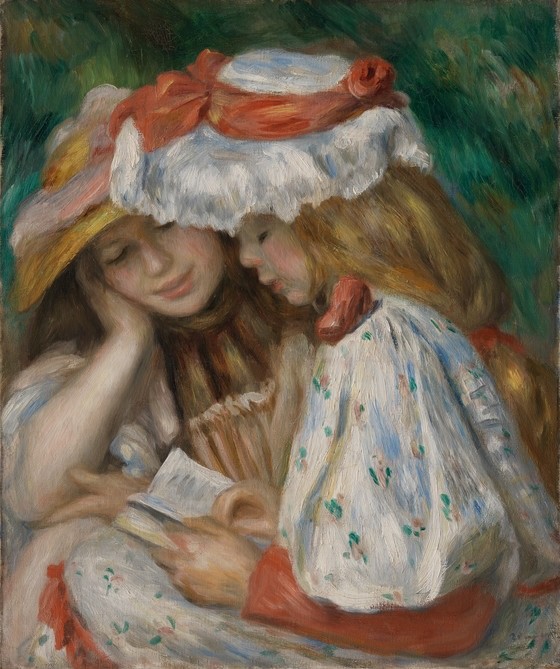Blast from the Past: First published August 25, 2018; updated June 1, 2024
This blog considered the value of decodable text. Since then, there has been more research on the issue, so I thought it a good time to update. There have been several thoughtful reviews of the empirical research over the years, and these reflect a great deal of consistency among the scientists who think deeply about this issue. None of them rules out the use of decodables, but none claims that their use improves reading achievement. Those who recommend a heavy and/or long-term dose of decodable text in beginning reading programs are not doing so based on the science of reading. I’ve updated this piece a great deal and beefed up the research references. You might want to go back to the original blog to see the 45 comments that it elicited, so here is that link:
https://www.shanahanonliteracy.com/blog/should-we-teach-with-decodable-text
Teacher question:
Please share your thinking as well as research referencing the occasional use of decodable texts for small group reading instruction in grades K-2.
Shanahan responds:
This is still not a highly researched topic. There have been only a handful of investigations into the effectiveness of decodable texts since the 1980s. And, truth be told, this collection of studies is a bit of a mess; with little evident agreement as to what decodable text is, what it should be compared with, and what learning outcomes should be expected.
Research has done less to solve the problem — do decodable texts advantage early reading development? — and more to demonstrate how complicated even simple ideas can be. (This is typical in the social sciences. Research studies often force us to operationalize constructs and that sometimes exposes how squishy soft our thinking is).
First issue… what is decodable text? Originally, the term was used relatively, it suggested more a continuum than a category (Juel & Roper-Schneider, 1985): phonics-oriented decodable texts used a preponderance of “words where all letters followed their major sound patterns.” The contrast to this was the basal readers of the time that employed a lower proportion of such words. Words like pet, big, nap, and dot would fit the decodable definition, while words like cow, pear, and come would not.
How regular did the words have to be to merit designation as decodable? Doesn’t decodability change with learning? As children know more spelling/pronunciation patterns, then those less frequent patterns become decodable, too.
Some researchers have tried setting percentages of decodability, and others have shifted the definitions to consider what the children have been taught at a given point.
If we all define decodable text in different ways then no one can be very happy with the research. No matter what a study finds, it becomes possible to reject research results out of hand because that may not be “what I meant by decodable.”
In that first study (Juel & Roper-Schneider, 1985), first graders taught with decodable texts outperformed the others in word reading, nonsense word reading, and the ability to read words they had not previously encountered – well, at least this was true when tested in November and February. However, by end of year, there were no differences when it came to either decoding ability or overall reading achievement. It is also fair to point out that the decodable group received more explicit phonics instruction, too. In other words, this study was more intriguing than determinative.
Since then, there have been a handful of empirical studies into the effectiveness of decodables. Sometimes with positive results (a 14 lesson study found that students were more likely to try to decode words in text if they worked with decodables (Mesmer, 2005)), and other times this experience seemed to reduce the likelihood of fluent reading (Price-Mohr & Price, 2018), or seemed to have no effect at all (students who worked with texts 11% decodable and 85% decodable did equally well in learning to read (Jenkins, et al., 2004)).
There are now almost as many research reviews on this topic as there are primary studies. These reviews all draw pretty much the same conclusions (Adams, 2009; Bier, 2007; Birch, et al., 2022; Cheatham & Alor, 2012; Mesmer, 2001). They acknowledge that decodable texts encourage students to apply their phonics skills (though this seems only to be true for most kids during a brief time during grade one). They also conclude that it is most prudent to use both decodables and non-decodables.
Hammering home that latter point is a new meta-analysis that examined more than 90 studies of early reading interventions. These studies were divided into 4 groups: those that did not employ text at all, those that only used decodables, those that did not use decodables, and those that used a combination of both. The text regime that significantly outdistanced the others in terms of how well they nurtured decoding ability was the diet that included decodables along with other texts.
Of course, there are several studies and evaluations of phonics instruction in which the program under investigation included decodable text (look at the phonics studies synthesized in the National Reading Panel Report or the various reports of What Works Clearinghouse). These phonics programs have been successful, but there is no evidence that without decodables they would have been any less effective. Phonics programs with and without them both seem to do well.
There are still methodological problems that need to be worked out on the research end of this. Researchers have usually failed to control the effects of other text factors. For instance, the amount of word repetition and the frequency of the words in the various texts are important variables that may confound the results of these studies (Mesmer, Cunningham, & Hiebert, 2012).
Finally, English is complex, and the sounds associated with letters and letter combinations depend on the letter’s position in the syllables, morphology, and etymology. That’s why so much is made these days of “statistical learning.”
Readers start to discern that b is more often associated with the /b/ sound in words like big and bad much more often than it will serve as a silent letter (such as in words like bomb or climb), and they learn to respond to this statistical difference accordingly. If unsure of the pronunciation of a b word, go with /b/; you’re more likely to get it right. Presenting students with lots of decodable text, text that’s much more regular that normal text, might mess up some of these cognitive calculations. Dick Venezky and Dale Johnson (1973) long ago showed that adults attribute sounds to letters in proportions more reflective of their appearance in children’s primers than of the actual proportions in which they appear in English language overall. (This is a problem for both leveled readers and decodable texts.)
I think it’s okay to use decodable texts as part of phonics instruction, but such practice should be limited, and even beginning readers should be reading (not just listening to) more than decodable texts.
References
Adams, M. J. (2009). Decodable text: Why, when, and how?” In E H. Hiebert & M. Sailors (Eds.), Finding the right texts: What works for beginning and struggling readers (pp. 23-46). New York: Guilford Press, 2009.
Bier, L. D. (2007). Texts and Beginning Readers. Unpublished paper, University of Delaware.
Birch, R., Sharp, H., Miller, D., Ritchie, D., & Ledger, S. (2022). A systematic literature review of decodable and levelled reading books for reading instruction in primary school contexts: An evaluation of quality research evidence. Newcastle, Australia: University of Newcastle.
Cheatham, J. P., & Allor, J. H. (2012). The influence of decodability in early reading text on reading achievement: A review of the evidence. Reading and Writing: An Interdisciplinary Journal, 25(9), 2223-2246. https://doi.org/10.1007/s11145-011-9355-2
Jenkins, J. R., Peyton, J. A., Sanders, E. A., Vadasy, P. F. (2004). Effects of reading decodable texts in supplemental first-grade tutoring. Scientific Studies of Reading, 8(1), 53-85. doi:https://doi.org/10.1207/s1532799xssr08014
Juel, C., & Roper-Schneider, D. (1985). The influence of basal readers on first grade reading. Reading Research Quarterly, 20(2), 134–152. https://doi.org/10.2307/747751
Mesmer, H. A. E. (2001). Decodable text: A review of what we know. Reading Research and Instruction, 40(2), 121-42. https://doi.org/10.1080/19388070109558338
Mesmer, H. A. E. (2005). Text decodability and the first-grade reader. Reading & Writing Quarterly, 21, 61-85. https://doi.org/10.1080/10573560590523667
Mesmer, H. A. E., Cunningham, J. W., & Hiebert, E. H. (2012). Toward a theoretical model of text complexity for the early grades: Learning from the past, anticipating the future. Reading Research Quarterly, 47(3), 235–258
Price?Mohr, R. M., & Price, C. B. (2018). Synthetic phonics and decodable instructional reading texts: How far do these support poor readers? Dyslexia: An International Journal of Research and Practice, 24(2), 190-196. https://doi.org/10.1002/dys.1581
Pugh, A., Kearns, D., & Hiebert, E. H. (2023). Text types and their relations to efficacy in beginning reading instruction. Reading Research Quarterly, 58(4), 710-732. https://doi.org/10.1002/rrq.513
LISTEN TO MORE: Shanahan On Literacy Podcast

-Lente.jpg)





Comments
See what others have to say about this topic.